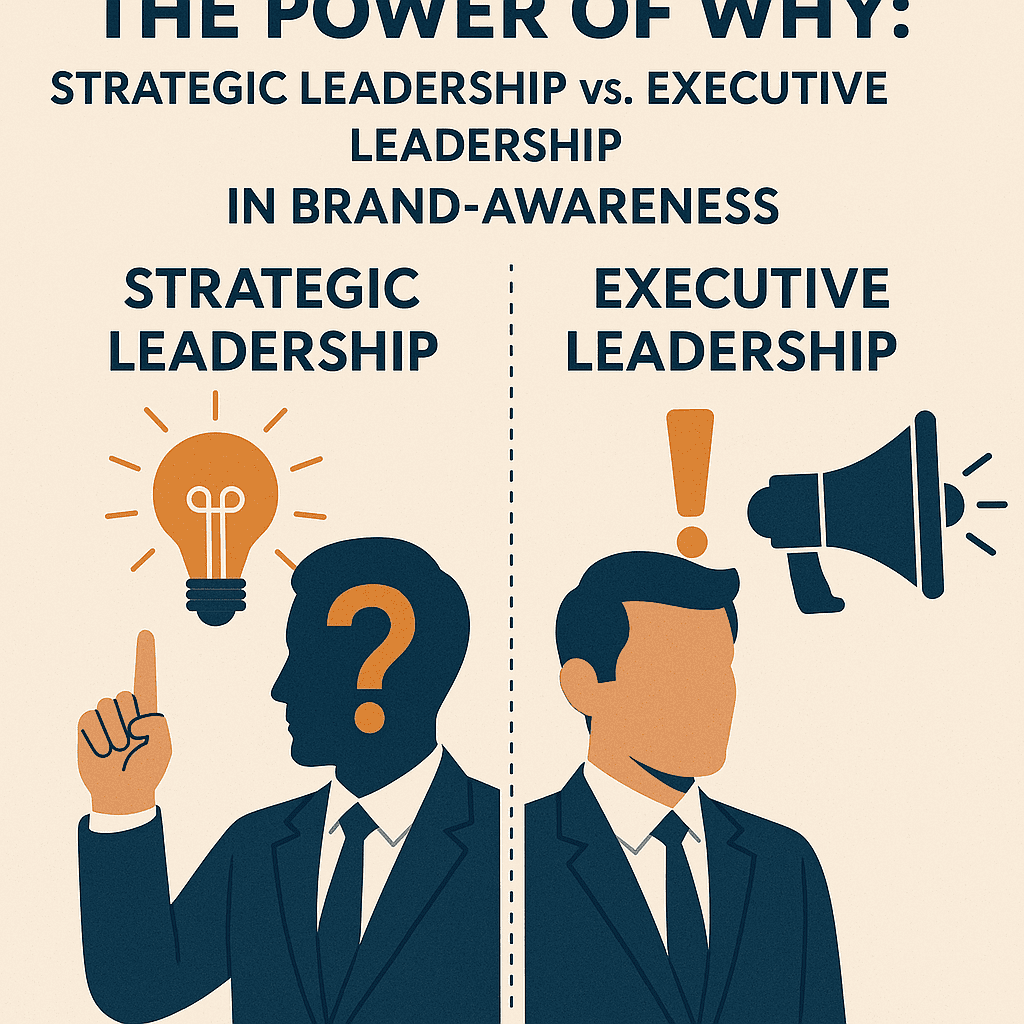The Power of Why: Strategic Leadership vs. Executive Leadership in brand-awareness

Leadership takes many forms, but at its core, it can be divided into two primary categories: strategic leadership and executive leadership. Strategic leadership focuses on the vision and purpose—the "why" behind an organization’s direction—while executive leadership concentrates on execution—the "how" of operationalizing that vision. This distinction is particularly crucial in marketing strategy, where understanding and communicating the "why" can make the difference between success and failure.
The Role of Strategic Leadership: The "Why"
Strategic leadership is about defining purpose, setting the long-term vision, and inspiring people to follow a cause greater than just profitability. Leaders like Steve Jobs, Simon Sinek, and Elon Musk have demonstrated that organizations that clearly articulate their "why" create deeper connections with their audience. They don’t just sell products; they sell belief systems.
In marketing, this translates to brand storytelling, emotional engagement, and trust-building. A company that knows its "why" doesn’t just push advertisements—it crafts a narrative that customers want to be a part of. When people understand and resonate with a company’s purpose, they become not just consumers but loyal brand advocates. Apple, for instance, doesn’t just sell technology; it promotes innovation, creativity, and challenging the status quo. This strategic approach generates long-term followers rather than one-time buyers.
Companies like Patagonia thrive because they don’t just sell outdoor gear; they advocate for sustainability and environmental responsibility, rallying like-minded consumers to their cause.
The Role of Executive Leadership: The "How"
While strategic leadership sets the vision, executive leadership focuses on implementation. Executive leaders translate the strategy into operational plans, manage resources, and ensure that marketing campaigns are executed efficiently. However, without a compelling "why" driving these initiatives, even the best-executed campaigns can fall flat.
Poor marketing strategy often results from focusing too much on the "how" without anchoring it in a meaningful "why." When businesses push products without a deeper purpose, consumers see through the tactics and disengage. Traditional advertising methods that focus solely on features, discounts, and superficial messaging often fail to create lasting brand loyalty.
Leading with Why
The distinction between strategic and executive leadership in marketing is vital to understanding why some brands inspire lifelong loyalty while others struggle to maintain relevance. Marketing that prioritizes purpose over mere promotion fosters trust, community, and sustainable success.
Oldřich Příklenk
Obrazek: https://chatgpt.com/

Prague office3rd floor, Drtinova 467/2a,
Prague 5, 150 00,
Czech Republic
